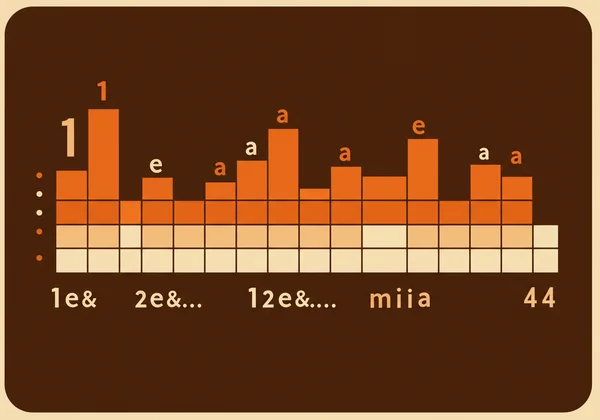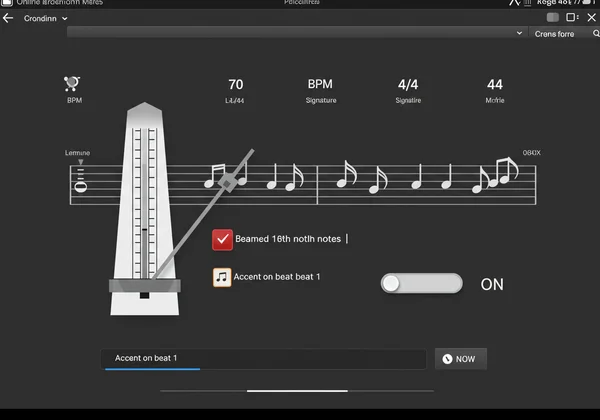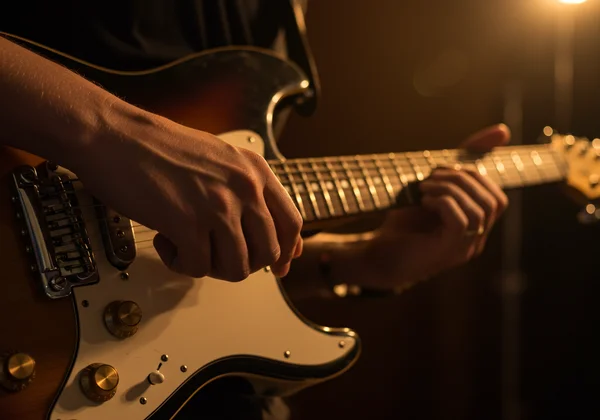Funk Rhythm Practice: How to Use a Metronome to Master Your Groove
That infectious, head-nodding pulse of a James Brown track, the undeniable "in-the-pocket" feel of The Meters—that's the magic of funk. But when you try to replicate it, does your playing feel stiff, rushed, or just slightly off? You're not alone. The secret to unlocking an authentic funk groove isn't just about feel; it's about precision.
This guide will show you how to use a metronome for funk as a powerful training tool. We'll focus on the rhythmic heart of the genre—16th-note subdivisions—to help you build a rock-solid internal clock and finally get "in the pocket."
Why 16th Note Subdivision is the Secret to Funk
Before we start any exercises, we must understand the rhythmic DNA of funk music. The secret isn't just about hitting the main beats (1, 2, 3, 4); it's about mastering the tiny slices of time between them. This is where the concept of 16th note subdivision becomes your most powerful ally. It’s the key to moving from a rigid pulse to a fluid, groovy feel.
Understanding the 16th-Note Grid: The Foundation of Funk
Imagine a standard bar of 4/4 time. Most beginners hear four main clicks. But a funk musician hears sixteen. We count it as "1-e-and-a, 2-e-and-a, 3-e-and-a, 4-e-and-a." The numbers are the downbeats, but the "e," "and," and "a" are the offbeats where syncopation lives. Funk guitar scratches, bass pops, and snare ghost notes almost always fall on these 16th-note subdivisions.
By practicing with a metronome that clicks on every single 16th note, you are laying down a high-resolution rhythmic map. This forces you to be aware of every possible placement for a note within the beat. This level of detail is fundamental to creating authentic funk grooves, and this mastery of the grid is what seasoned musicians call being "in the pocket."
How Subdivisions Build Your Internal Clock
When you consistently practice with 16th note clicks, something incredible happens. Your brain and muscles start to internalize that grid. You begin to feel the space between the main beats with the same confidence as the beats themselves. This develops your internal clock to an incredibly fine degree.
Hearing every 16th note click forces you to develop precision. There is no room to rush or drag the beat because you are immediately made aware of any timing error. Over time, you won’t need to hear every click; you will simply feel it. This is a state where your playing is so rhythmically secure that it feels effortless, locked-in, and deeply groovy. This is what separates amateurs from professionals, and a good metronome is the tool to get you there.

Setting Up Your Online Metronome for Funk
Theory is great, but let's get practical. To build your groove, you need more than a simple clicker; you need a versatile metronome for funk. A tool like our free online metronome is perfect because it has the advanced features required for this practice. Here’s the three-step process to set it up.

Step 1: Set Your Tempo and Time Signature
Funk can be played at various tempos, but when practicing, always start slow. A slow tempo forces you to be more conscious of the space between notes. We recommend setting your BPM (Beats Per Minute) between 60 and 80. This might feel painfully slow at first, but it's crucial for building accuracy.
Keep the time signature at the standard 4/4, as this is the foundation for the vast majority of funk music. On MetronomeOnline.org, you can easily slide or type in your desired BPM and select the 4/4 time signature.
Step 2: Activate 16th Note Subdivisions
This is the most important step. You need to tell the metronome to click on every 16th note. On our online tool, you will see a series of note icons that represent different subdivisions. Click on the icon showing four beamed 16th notes. You will immediately hear the difference—the metronome will go from a simple "tick, tick, tick, tick" to a much faster "tiki-tiki, tiki-tiki."
This feature transforms the metronome from a simple counter into a powerful rhythm practice tool. It provides the audible grid you need to place your syncopated notes perfectly.
Step 3: Set an Accent on the Downbeat
With 16 rapid clicks per bar, it can be easy to lose track of where beat '1' is. That's why using the accent feature is so helpful. On our tool, you can toggle an accent for the first beat of the measure. This will make the click on beat '1' slightly louder or a different tone than the other fifteen clicks.
This accent acts as your anchor. It keeps you grounded within the bar while your fingers or feet are busy navigating complex syncopation on the offbeats. This combination of constant subdivision and a clear downbeat is the ideal setup for effective funk practice.
Foundational Syncopation Exercises for Your Instrument
With your metronome correctly configured, it's time to play. These syncopation exercises are designed to be played on any instrument—guitar, bass, drums, or keyboard. The goal isn't melodic complexity; it's rhythmic precision. Focus on locking in with the 16th-note clicks.

Exercise 1: Accenting the 'e' and 'ah'
This is the simplest way to start feeling the offbeats. Set your metronome to 70 BPM with 16th note subdivisions. Your task is to play a single, muted note (or a drum hit) only on the 'e' and the 'ah' of every beat. Count it out loud: "1-E-and-AH, 2-E-and-AH..."
At first, this will feel awkward. Your body wants to play on the strong beats ('1', 'and'). This exercise forces you to resist that urge and develop control over the weakest parts of the beat. Do this for five minutes straight, focusing only on the precision of your timing.
Exercise 2: Building a Classic "Funky Drummer" Groove
Let's build a simple pattern inspired by Clyde Stubblefield's iconic beat on James Brown's "Funky Drummer." Keep the metronome settings the same.
- Beat 1: Play a strong, clear note on the downbeat.
- Beat 2: Play very soft, muted 'ghost notes' on all four 16th-note subdivisions (
2-e-and-a). - Beat 3: Play another strong, clear note on the downbeat.
- Beat 4: Rest completely for the entire beat.
This exercise trains the dynamic control between loud accents and quiet rhythmic 'chatter' that defines the Funky Drummer groove.
Exercise 3: The "Reverse" Groove (Playing Only Offbeats)
This exercise flips the script and is fantastic for developing control. Here, you will intentionally mute or rest on the strong downbeats ('1', '2', '3', '4') and only play notes on the offbeats ('e', 'and', 'a'). This is extremely challenging but incredibly effective.
This forces your rhythmic center of gravity to shift entirely to the offbeats. Guitarists can practice this with percussive "chickas," while bassists can focus on placing notes right before or after the beat. This skill of muting with rhythmic intention is what gives funk its percussive, staccato feel. When you can do this cleanly, your playing will have achieved a new level of rhythmic sophistication.
Get in the Pocket and Start Your Practice
Mastering funk isn't a mysterious gift—it's the result of dedicated, intelligent practice. By using a metronome to internalize the 16th-note grid, you are rewiring your rhythmic instincts. You're moving beyond simply keeping time and learning to own the space between the beats. This is where the real groove lives.
The journey from stiff to soulful playing starts now. Don't just read about it. Open our free online metronome, set the BPM to 70, activate 16th-note subdivisions, and try Exercise 1 for just five minutes. It's time to stop chasing the pocket and start living in it.
Frequently Asked Questions
How can a metronome improve my playing "feel"?
A metronome improves "feel" by building an unshakable internal clock. When your timing is perfect, you don't have to think about it. This frees you to focus on the expressive elements—dynamics, articulation, and emotion—that transform technically correct playing into a groovy performance.
How do I find the BPM of a funk song?
To find a song's BPM, use a tap tempo feature, available on our free online metronome. Just listen to the track and tap along to the beat on the "Tap BPM" button. The tool will calculate the BPM, which you can then use for your practice.
What is a good tempo to start practicing funk rhythms?
Always start slow, between 60-80 BPM. A slow tempo forces you to be conscious of every 16th-note subdivision, which is essential for building accuracy. As you get comfortable, you can gradually increase the speed to challenge yourself.